
 |
Recent Books by Forum Members |

 |
 |
|
|
|||||||
 |
|
|
Thread Tools | Display Modes |
|
|
|
#1
|
||||
|
||||
|
Just a really cool 7th AT RCA (1st Corps) Battledress jacket attributed to G5024 Gnr Graham F. Forrest of Fredericton New Brunswick. Looks like Forrest was an original enlistee of 104 Battery. Forrest was nice enough to leave a wonderful name and unit number inside the pocket. Another really neat thing is that he replaced his buttons with Italian composition buttons I imagine he acquired when the regt served in the Italian campaign. Just a great Time capsule type BD that I thought some might like to see.
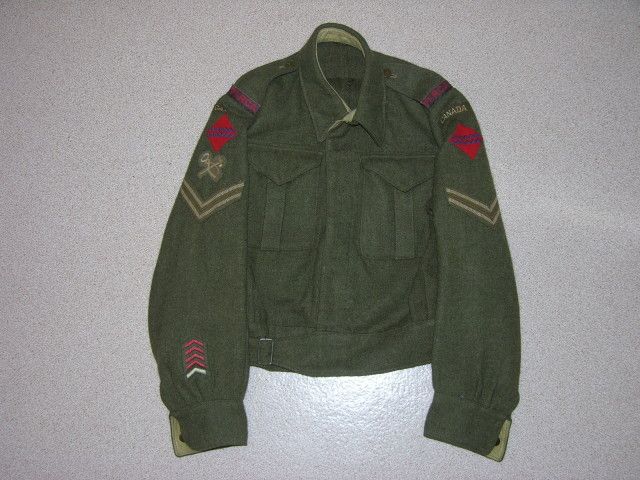 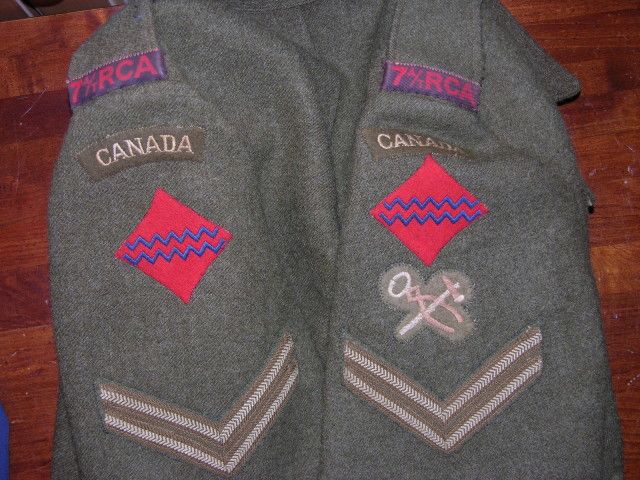 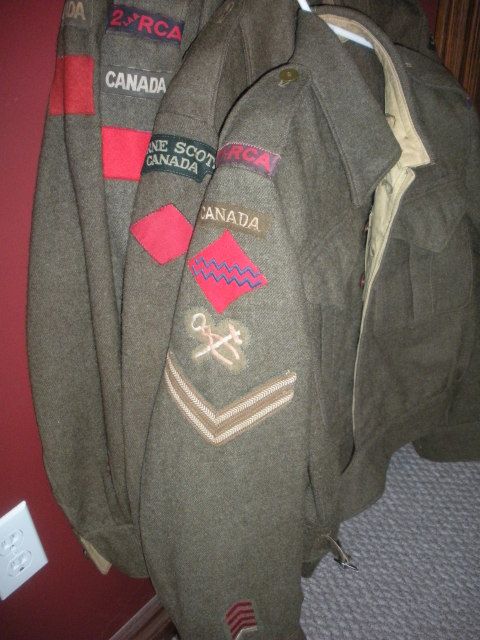 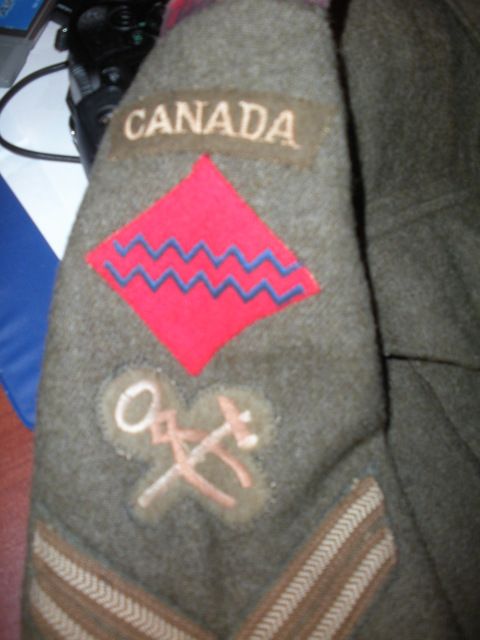 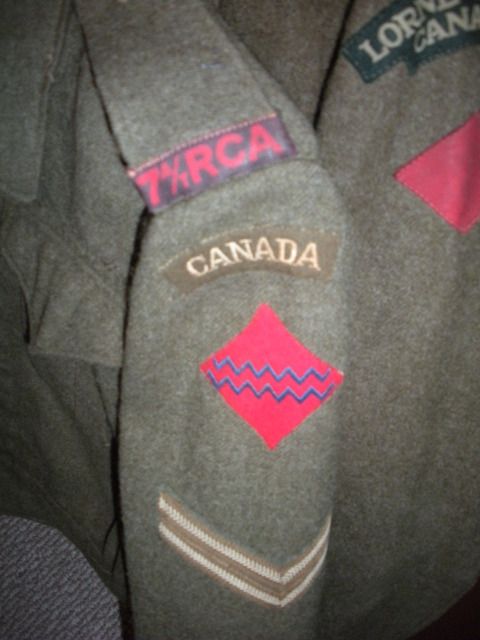 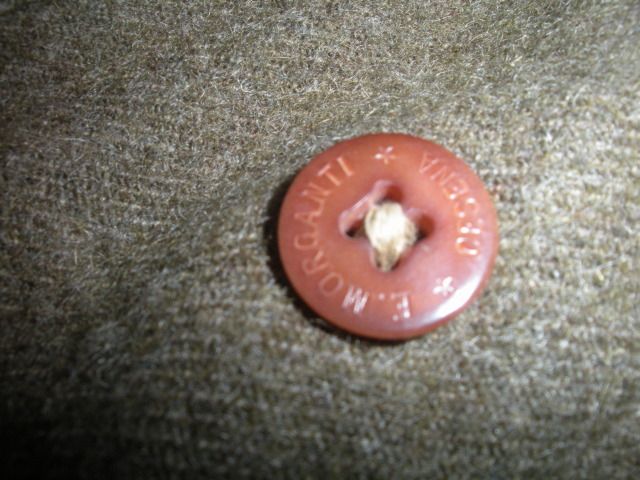 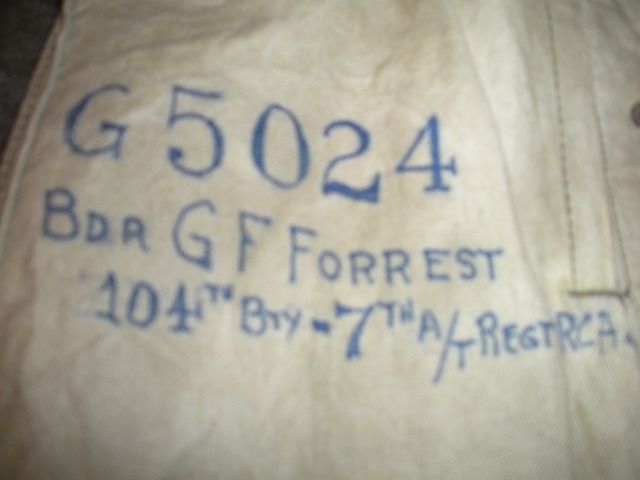 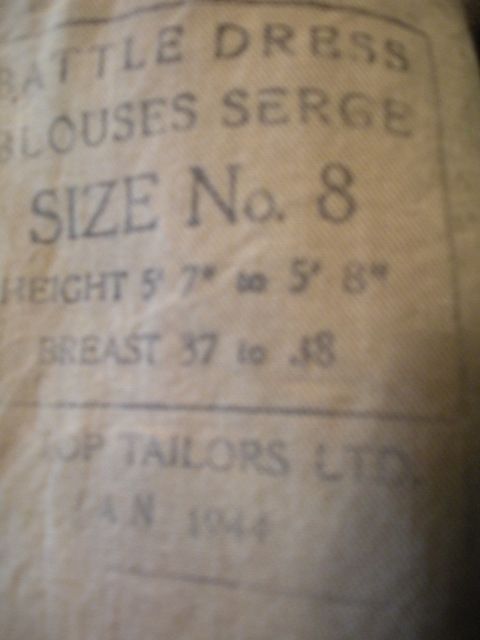
|
|
#2
|
||||
|
||||
|
Nice tunic Mike. Note the mix of insignia. Canvas 7 AT, the melton 1 Cdn Corps AGRA patches, with the double thunder bolts, artificer's badge and the Second World War era rank stripes.
__________________
Res ipsa loquitur |
|
#3
|
|||
|
|||
|
Yes, a very nice BD indeed!
|
|
#4
|
|||
|
|||
|
Quote:
I'm just curious if the pattern was really intended to portray a thunderbolt, or if this is "collector's terminology". The patches were, I presumed, a successor to the artillery patches of the Canadian Corps, which were similarly described in contemporary accounts as a "jagged line". The thunderbolt has generally been associated in military symbology with signals units (the R.C.C.S. cap badge is a good example, or even Wehrmacht signaller's trade badges for another). Not trying to be sticky on this point, just genuinely curious why you refer here to them as "thunderbolts". Admittedly, Clive's book doesn't directly quote the sources he cites in some cases, but paraphrases, in a way it seems that the terminology is a direct quote. I double-checked with Falconer's BATTERY FLASHES, and interestingly, a written description of the RCA formation patches doesn't appear, except on page 468, almost as a footnote, when Falconer quotes a letter he received from DHist, Ottawa: "With regard to formation patches, they are as described by you including the 1st Corps RCA patch...There were no Armoured Brigade Groups. We have no knowledge of a black horizontal diamond patch with red zig-zag. Artillery 2 Corps wore a blue diamond with a red zig-zag." Emphasis is mine. The illustration that Falconer uses of the 1st Corps RCA patch also shows the ends of the "zig-zag" closed, unlike Michael's example, above, so no "thunderbolts", but rather, a single blue-outline of a "zig-zag". Incidentally, also, both Falconer and Law show three different patches for high level Canadian artillery formations in the Second World War - one listed as being for AGRA (red diamond with blue bar horizontal and red zig-zag), and then two different patches for the corps artillery (a red diamond with blue zig-zag for 1st corps and a blue diamond with red zig-zag for 2nd Corps). AGRA and Corps artillery were two different things...
__________________
canadiansoldiers.com Last edited by Michael Dorosh; 16-10-12 at 05:47 AM. |
|
#5
|
||||
|
||||
|
Great BD, thanks for posting. I love to see items like this.
|
|
#6
|
||||
|
||||
|
Hello Michael, The term comes from the use of the jagged line (not a zig zag) on the artillery formation patches of the FWW. The jagged line represented the sound of thunder which was simplified to a zig zag.
My confusion between 1 AGRA and 2 AGRA with the 1 Cdn Corps RCA and 2 Cdn Corps RCA in designation. The patch on the tunic is 1 Cdn Corps RCA. Both First Cdn Army 1 AGRA and First Cdn Army 2 AGRA wore the same patch.
__________________
Res ipsa loquitur Last edited by Bill A; 16-10-12 at 03:12 PM. |
|
#7
|
||||
|
||||
|
Hi Mike,
Great BD. Before my Grandfather transferred into Le Regiment de la Chaudiere in November 1940...he was an enlistee with the 105th A/TK Battery in St. George New Brunswick. His Service Number is very close to this BD's owner. Mike
__________________
http://www.youtube.com/watch?v=gQciIKa-dIM |
 |
|
|
 |